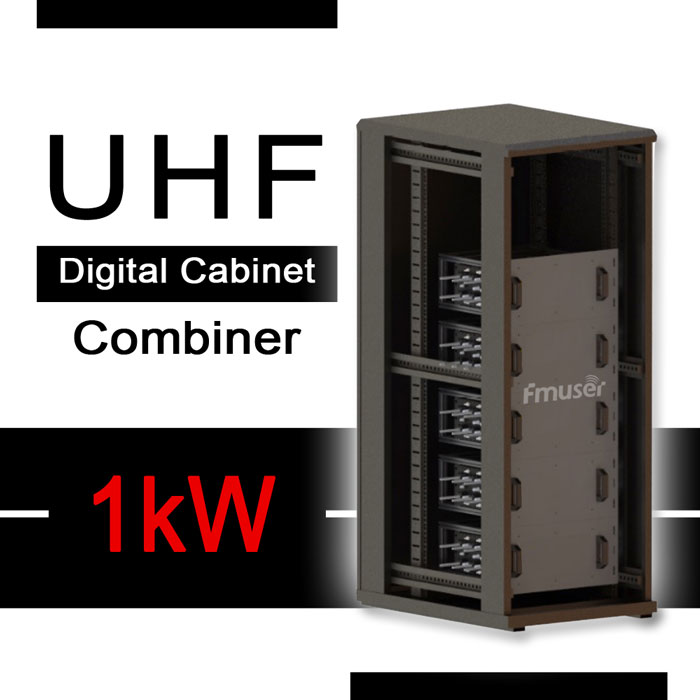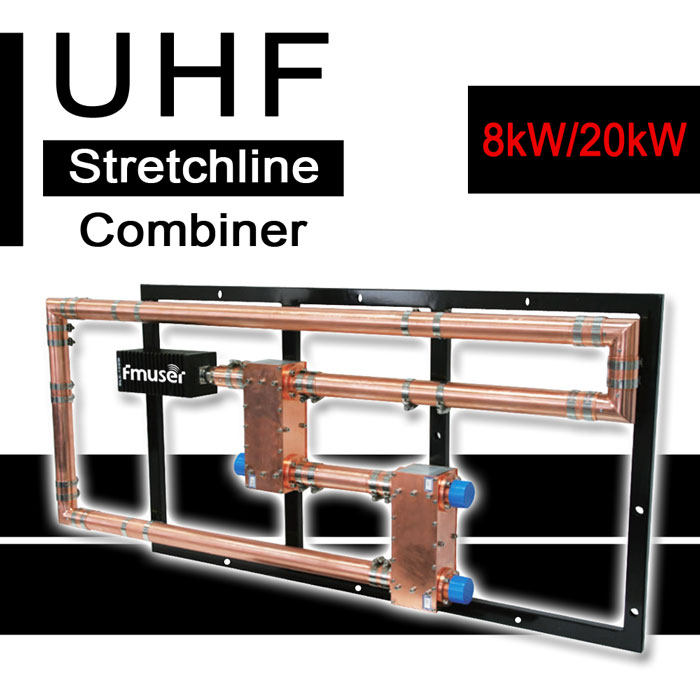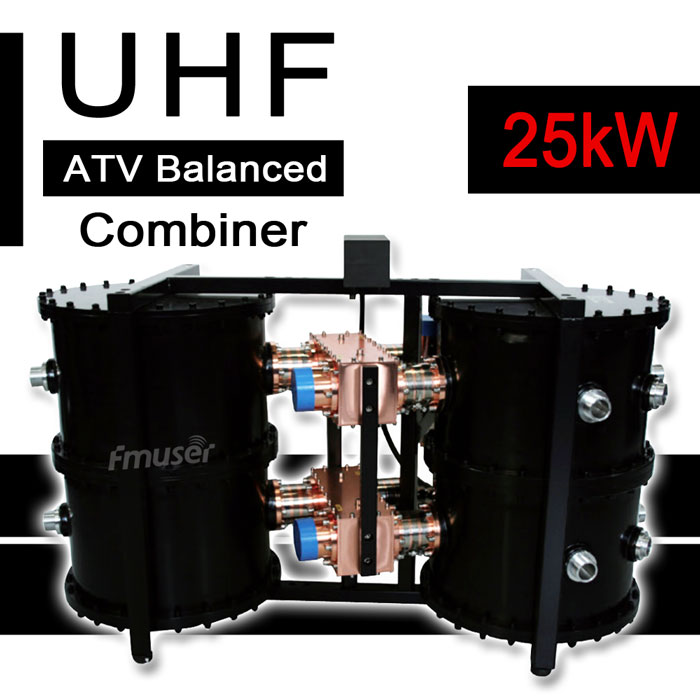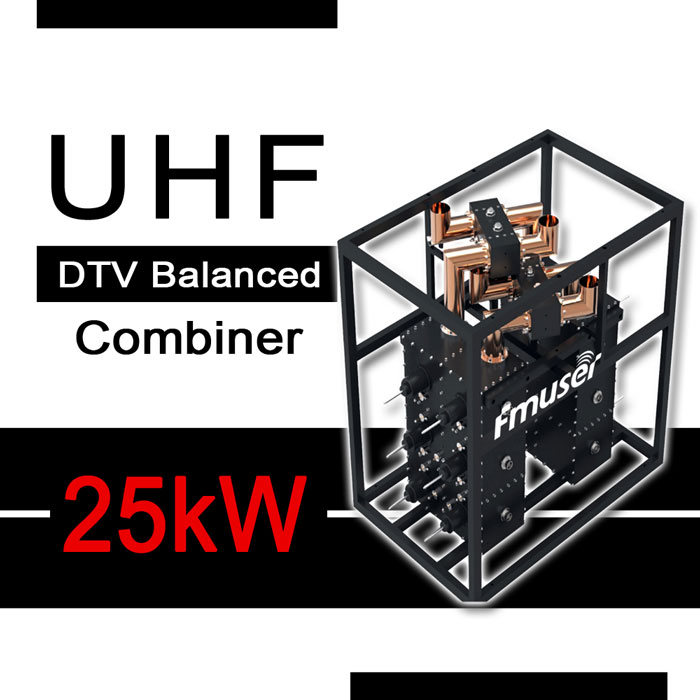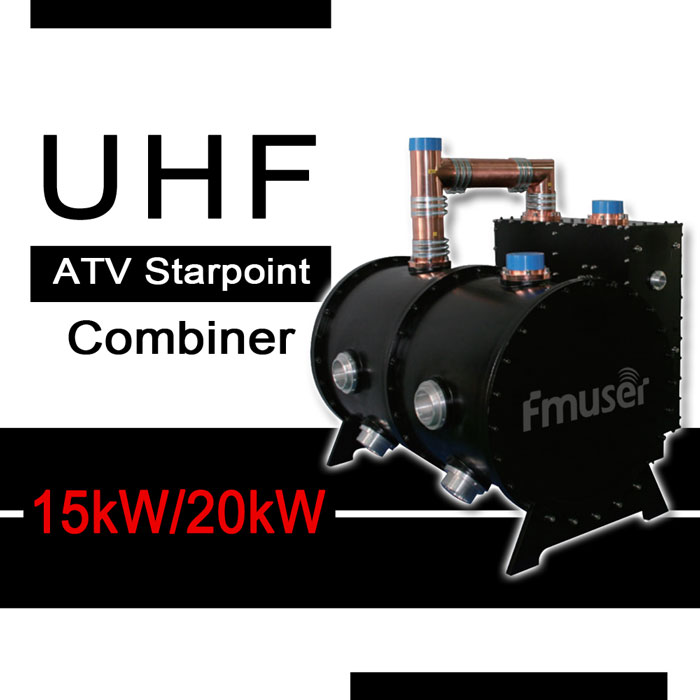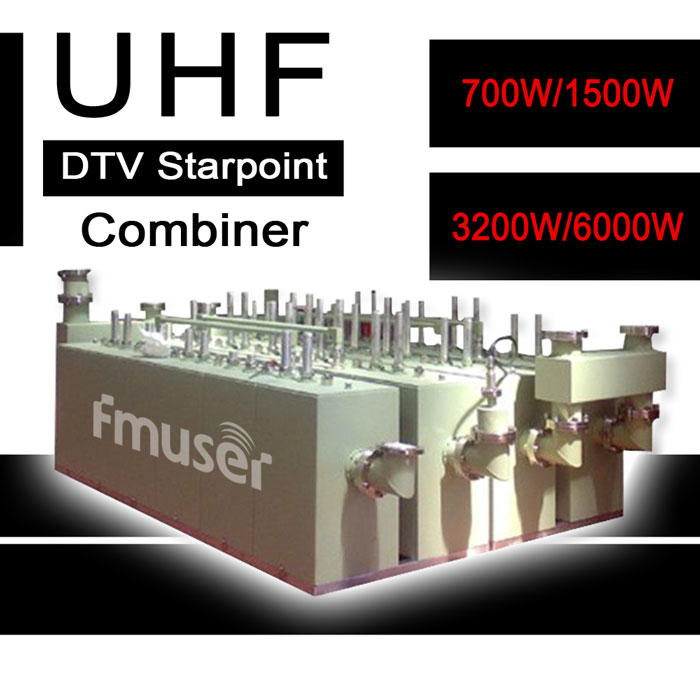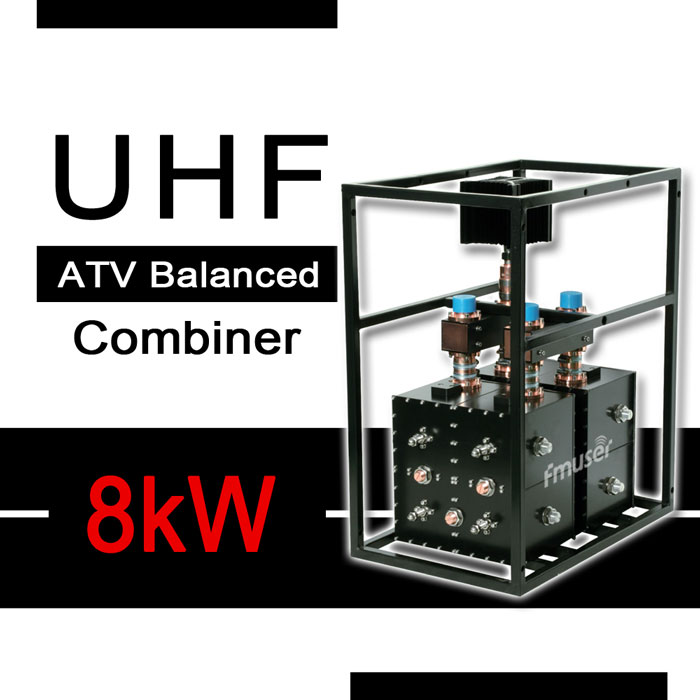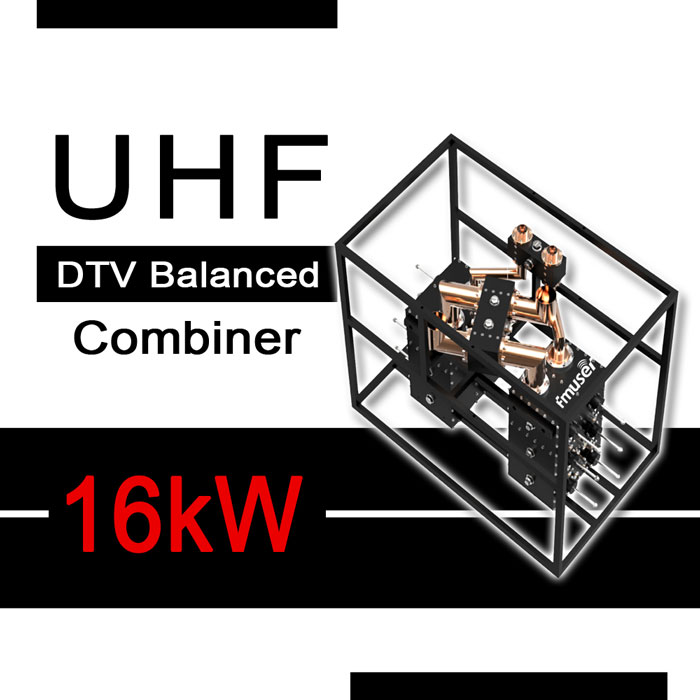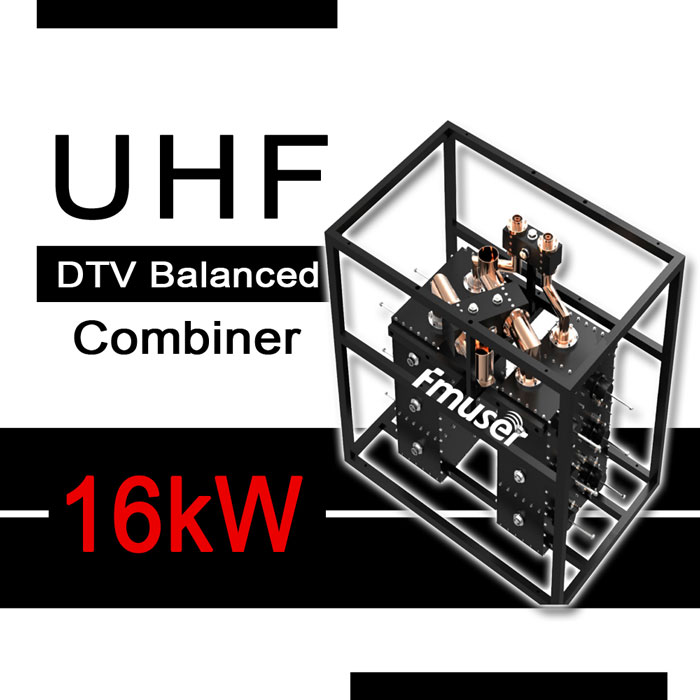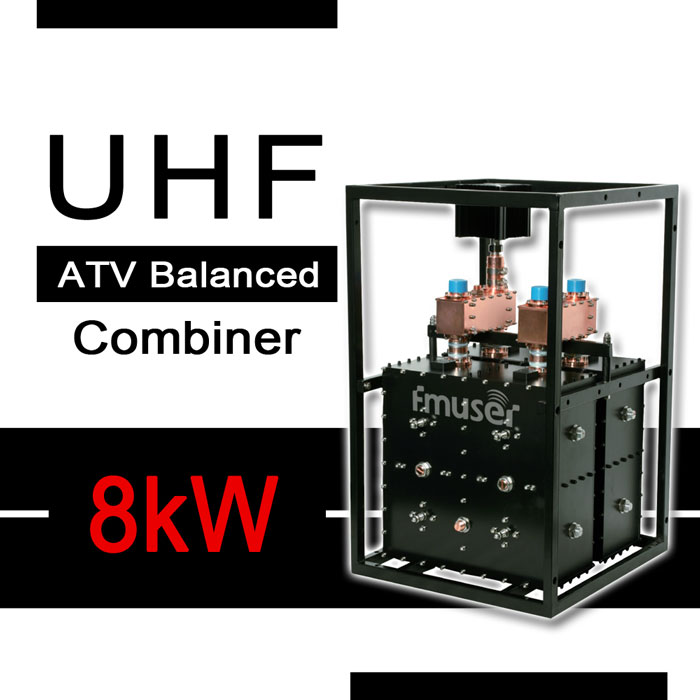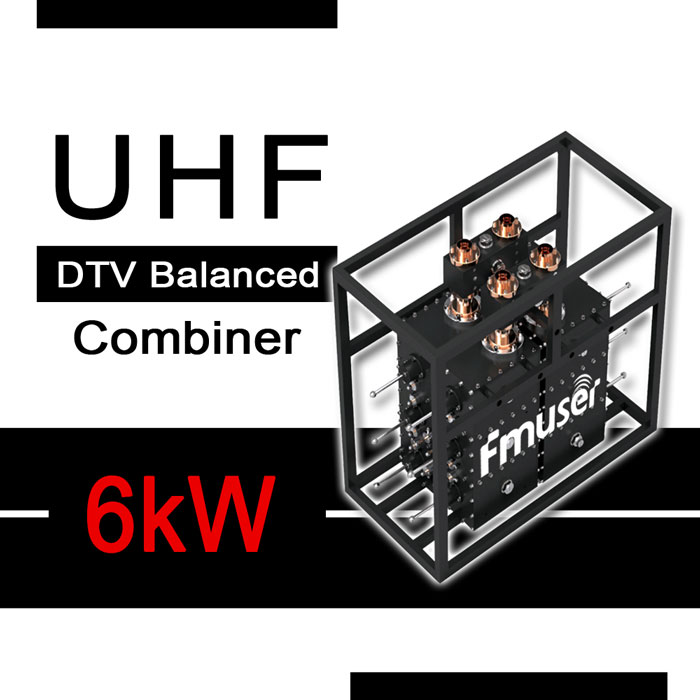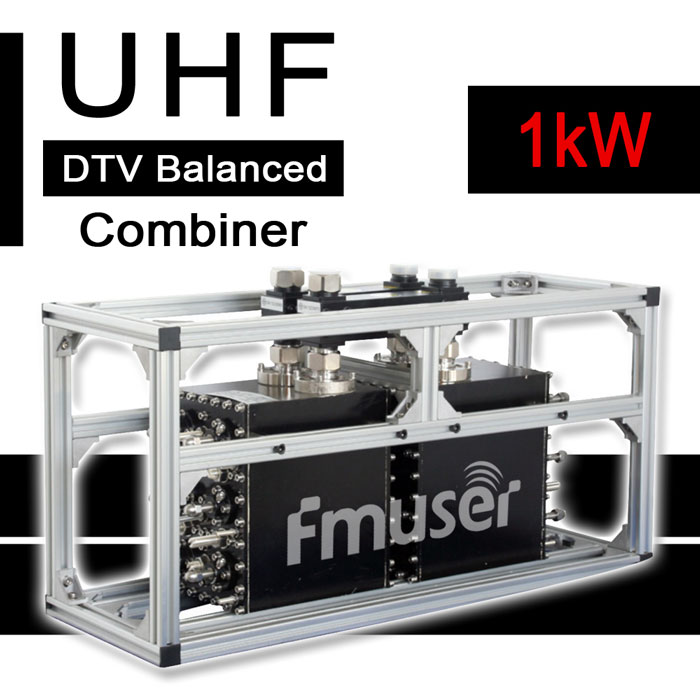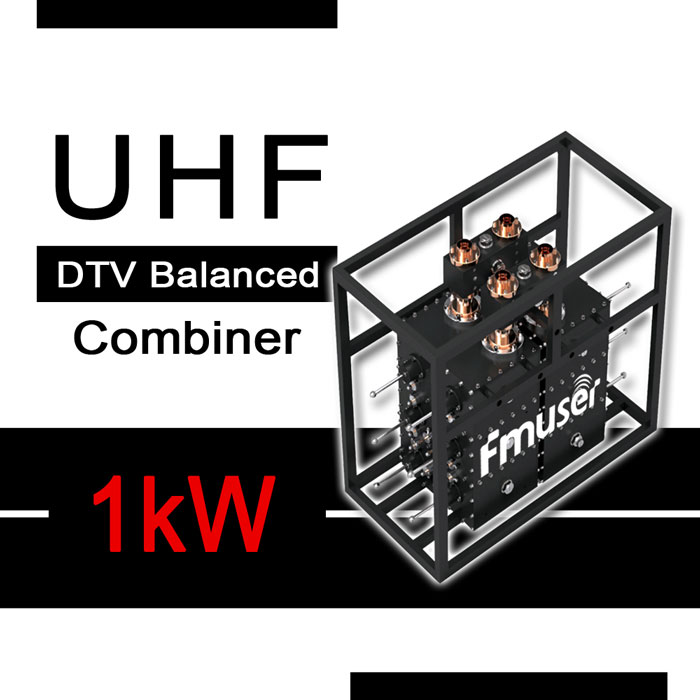
UHF Combiners
UHF combiner huwa tip ta 'sinjal combiner użat għall-kombinazzjoni ta' sinjali multipli fl-ispettru ta 'frekwenza ultra-għolja (UHF) f'sinjal ta' output wieħed jew tnejn. Huwa magħruf ukoll bħala netwerk li jgħaqqad il-frekwenza tar-radju jew diplexer. Applikazzjonijiet komuni ta 'transmitter combiner UHF jinkludu l-kombinazzjoni ta' sinjali tat-televiżjoni multipli f'kejbil wieħed jew il-kombinazzjoni ta 'sinjali tar-radju multipli f'antenna waħda. Barra minn hekk, kombinaturi UHF jistgħu jintużaw biex jgħaqqdu trasmettituri multipli f'antenna waħda għax-xandir, jgħaqqdu riċevituri multipli f'antenna waħda biex jirċievu sinjali, u jgħaqqdu netwerks mingħajr fili multipli f'antenna waħda.
-
![470-862 MHz 7/16 DIN 1kW Solid State UHF Transmitter Combiner Starpoint Compact 1000W 6 Cavity Duplexer for TV Broadcasting]()
Prezz (USD): Itlob għal kwotazzjoni
Mibjugħa: 11
-
![470-862 MHz 8kW/20kW Stretchline UHF Transmitter Combiner Tunable RF Channel Combiner with 1 5/8" 3 1/8" Input for TV Station]()
Prezz (USD): Itlob għal kwotazzjoni
Mibjugħa: 9
-
![470-862 MHz 3 1/8" 6 Cavity 25kW Balanced CIB UHF Transmitter Combiner ATV TV TX RX Duplexer Compact UHF Combiner for TV Station]()
Prezz (USD): Itlob għal kwotazzjoni
Mibjugħa: 7
-
![470-862MHz 25kW 4 1/2" Input Compact UHF RF Combiner High Power UHF 6 Cavity Duplexer Solid State DTV TX Combiner for TV Station]()
Prezz (USD): Itlob għal kwotazzjoni
Mibjugħa: 7
-
![470-862 MHz 15kW 20kW 3 1/8" Starpoint UHF Transmitter Combiner Analog TX RX Combiner Compact 4 Cavity Duplexer for TV Station]()
Prezz (USD): Itlob għal kwotazzjoni
Mibjugħa: 7
-
![470-862 MHz Starpoint UHF Transmitter Combiner 6 Cavity Duplexer 7/16 DIN 1 5/8" 3 1/8" Supported 700W to 6kW Customized Power]()
Prezz (USD): Itlob għal kwotazzjoni
Mibjugħa: 4
-
![470-862 MHz 8kW UHF 4 Cavity Duplexer 1 5/8" Compact TX Combiner Channel Plus High Power UHF Transmitter Combiner for TV Station]()
Prezz (USD): Itlob għal kwotazzjoni
Mibjugħa: 2
-
![470-862 MHz 16kW 1 5/8" 3 1/8" Balanced CIB 6 Cavity Duplexer Compact DTV UHF Transmitter Combiner TX RX Duplexer for TV Station]()
Prezz (USD): Itlob għal kwotazzjoni
Mibjugħa: 2
-
![470-862MHz 1 5/8" 3 1/8" 6 Cavity 16kW Balanced Radio Combiner 2 Way RF Combiner Compact Radio Frequency Combiner for TV Station]()
Prezz (USD): Itlob għal kwotazzjoni
Mibjugħa: 9
-
![470-862 MHz 1 5/8" 4 Cavity 8kW Balanced Duplexer Compact ATV UHF Transmitter Combiner Solid state Duplexer for TV Broadcast]()
Prezz (USD): Itlob għal kwotazzjoni
Mibjugħa: 7
-
![470-862 MHz 1 5/8" 6kW Compact UHF Cavity Duplexer 4 Way RF Combiner High Power DTV UHF transmitter Combiner for TV Broadcasting]()
Prezz (USD): Itlob għal kwotazzjoni
Mibjugħa: 9
-
![470-862 MHz 7/16 DIN 1kW UHF TV Combiner Compact Balanced RF Signal Combiner Solid State DTV UHF Cavity Duplexer for TV Station]()
Prezz (USD): Itlob għal kwotazzjoni
Mibjugħa: 4
-
![470-862 MHz 1 5/8" 6 Cavity Solid State 1kW DTV UHF Transmitter Combiner Compact Radio Repeater Duplexer Filter for TV Broadcast]()
Prezz (USD): Itlob għal kwotazzjoni
Mibjugħa: 6
- Kif tuża combiner UHF għax-xandir?
- Passi biex tinstalla b'mod korrett combiner UHF fi stazzjon tax-xandir:
1. Installa l-combiner f'ambjent niexef u ħieles mit-trab.
2. Qabbad l-inputs kollha ta 'l-antenna UHF mal-combiner fl-ordni korretta.
3. Qabbad l-output tal-combiner mat-trasmettitur.
4. Kun żgur li tħawwad sew il-combiner.
5. Ivverifika li l-komponenti kollha huma konnessi u jaħdmu sew.
Problemi komuni li għandhom jiġu evitati meta tuża kombinatur UHF fi stazzjon tax-xandir:
1. Tqabbad it-tip ħażin ta 'antenna mal-combiner.
2. Mhux jgħaqqad il-combiner mal-art xierqa.
3. Mhux irfinar sew il-combiner.
4. Mhux issettjat sew il-livelli tal-qawwa tat-trasmettituri konnessi.
5. Mhux tissettja l-frekwenza korretta għall-combiner.
- Kif jaħdem combiner UHF?
- UHF combiner huwa apparat użat fl-istazzjonijiet tax-xandir biex jgħaqqad sinjali UHF multipli fi output wieħed. Jaħdem billi jgħaqqad is-sinjali minn trasmettituri multipli u jamplifikahom fi output wieħed. Dan jippermetti lix-xandara jiżguraw li s-sinjal minn trasmettituri multipli jiġi kkombinat f'sinjal qawwi wieħed li jista 'jiġi riċevut minn riċevitur.
- Għaliex kombinatur UHF huwa importanti għal stazzjon tar-radju?
- Combinar UHF huwa importanti għall-istazzjonijiet tax-xandir għaliex jgħaqqad sinjali UHF multipli f'output wieħed, li jippermetti lix-xandara joħolqu trasmissjoni aktar effiċjenti tas-sinjal tagħhom. Dan jippermetti lix-xandara jilħqu udjenza akbar, u jnaqqas l-ammont ta 'enerġija meħtieġa u t-tagħmir meħtieġ biex jittrasmettu s-sinjal tagħhom. Huwa meħtieġ għal stazzjon tax-xandir jekk iridu jilħqu udjenza akbar.
- Kemm hemm tipi ta' VHF combiners u x'inhuma d-differenzi bejniethom?
- Hemm żewġ tipi ewlenin ta 'kombinaturi UHF: passivi u attivi. Il-kombinaturi UHF passivi huma apparati sempliċi u bi prezz baxx li jgħaqqdu sinjali multipli f'sinjal wieħed b'telf minimu ta 'sinjal. Il-kombinaturi UHF attivi huma apparati aktar kumplessi li jinkorporaw amplifikaturi u filtri biex itejbu l-qligħ tas-sinjal u jnaqqsu l-istorbju. Id-differenza ewlenija bejn it-tnejn hija li combiners UHF attivi huma aktar għaljin u jipprovdu kwalità tas-sinjal aħjar, filwaqt li combiners UHF passivi huma aktar sempliċi, inqas għaljin, u jipprovdu kwalità tas-sinjal ifqar.
- Kif tagħżel l-aħjar VHF combiner?
- Meta tagħżel l-aħjar combiner UHF għal stazzjon tax-xandir, huwa importanti li tikkunsidra n-numru ta 'inputs u outputs, il-qligħ, iċ-ċifra tal-istorbju, l-iżolament, it-telf tar-ritorn, u l-immaniġġjar tal-enerġija. Barra minn hekk, għandek tiżgura ruħek li tirrevedi l-kwalità tal-kostruzzjoni, il-garanzija, u l-appoġġ tal-klijent tal-kumpanija. Fl-aħħarnett, għandek tqabbel il-prezzijiet u l-karatteristiċi f'diversi marki biex tiżgura li tikseb l-aħjar valur għal flusek.
- Kif tikkonnettja b'mod korrett combiner UHF fis-sistema tax-xandir?
- 1. Qabbad l-output tal-exciter mal-input tal-combiner UHF.
2. Qabbad l-output tal-combiner UHF mad-dħul tal-amplifikatur.
3. Qabbad il-ħruġ tal-amplifikatur mal-input tal-antenna.
4. Kun żgur li l-kejbils kollha huma mwaħħla u għandhom ert xieraq.
5. Aġġusta l-gwadann tal-amplifikatur kif meħtieġ.
6. Ittestja l-UHF combiner b'ġeneratur tas-sinjali biex tiżgura tħaddim tajjeb.
- X'tagħmir huwa relatat ma' combiner UHF?
- It-tagħmir relatat ma 'kombinatur UHF fi stazzjon tax-xandir jinkludi matriċi ta' antenna, akkoppjar ta 'l-antenna, amplifikaturi RF, filtri RF, swiċċijiet RF, attenwaturi RF, u provvisti ta' enerġija.
- X'inhuma l-aktar speċifikazzjonijiet fiżiċi u RF importanti ta' combiner UHF?
- L-aktar speċifikazzjonijiet fiżiċi u RF importanti ta’ combiner UHF jinkludu:
Speċifikazzjonijiet Fiżiċi:
• Daqs: Id-daqs tal-combiner huwa importanti meta jiġi kkunsidrat jekk hux se jidħol fl-ispazju disponibbli.
• Piż: Il-piż tal-combiner għandu jiġi kkunsidrat meta jiġi kkunsidrat jekk jistax jiġi ttrasportat u installat faċilment.
• Egħluq: L-egħluq tal-combiner għandu jkun robust biżżejjed biex jipproteġi l-komponenti interni mill-kundizzjonijiet ambjentali.
Speċifikazzjonijiet RF:
• Medda tal-Frekwenzi: Il-firxa tal-frekwenza tal-combiner għandha tkopri l-firxa tal-frekwenza UHF mixtieqa, tipikament bejn 470-698 MHz.
• Iżolament: L-iżolament tal-combiner għandu jkun għoli biżżejjed biex jiżgura li s-sinjali minn kull port ma jinterferixxux ma 'xulxin.
• Telf ta 'Inserzjoni: It-telf ta' inserzjoni tal-combiner għandu jkun baxx biżżejjed sabiex il-qawwa tas-sinjal ma titnaqqasx b'mod sinifikanti hekk kif tgħaddi mill-combiner.
• Telf tar-ritorn: It-telf tar-ritorn tal-combiner għandu jkun għoli biżżejjed biex jiżgura li s-sinjal jiġi rifless lura b'distorsjoni minima.
- Kif inti żżomm korrettament combiner UHF bħala inġinier?
- 1. Spezzjona l-combiner għal kwalunkwe sinjal ta 'ħsara fiżika jew deterjorazzjoni.
2. Naddaf il-komponenti interni tal-combiner b'ċarruta niexfa u/jew arja kkompressata biex tneħħi t-trab u d-debris.
3. Iċċekkja l-livelli ta 'input u output RF billi tuża miter ta' watt RF.
4. Spezzjona l-kejbils u l-konnetturi kollha għal xi konnessjonijiet laxki jew difettużi.
5. Iċċekkja l-provvista tal-enerġija u l-livelli tal-vultaġġ biex tiżgura li huma fil-parametri operattivi normali.
6. Iċċekkja s-settings u l-aġġustament tal-filtri u l-passband tal-combiner biex tiżgura li huma korretti.
7. Wettaq kwalunkwe tiswija jew sostituzzjoni meħtieġa.
8. Iddokumenta l-attivitajiet kollha ta' manutenzjoni.
- Kif isewwi kombinatur UHF jekk ma jkunx qed jaħdem?
- Biex isewwi kombinatur UHF, ser ikollok bżonn l-ewwel tidentifika l-problema. Jekk il-combiner ma jkunx qed jaħdem, ikollok bżonn tiċċekkja l-komponenti kollha tagħha għal xi sinjali ta 'ħsara jew deterjorazzjoni. Ladarba l-problema tkun ġiet identifikata, tista 'mbagħad tissostitwixxi kwalunkwe partijiet miksura jew li ma jaħdmux ħażin. Skont it-tip ta’ combiner UHF, jista’ jkollok bżonn tuża għodda u partijiet speċjalizzati biex tagħmel it-tiswija. Ladarba l-partijiet ikunu ġew sostitwiti, għandek tkun tista 'tittestja għal kollox il-combiner u tiżgura li qed taħdem b'mod korrett.
- Kif tagħżel l-ippakkjar it-tajjeb għal combiner UHF?
- Meta tagħżel l-imballaġġ it-tajjeb għal combiner UHF, huwa importanti li jiġi żgurat li l-ippakkjar ikun iddisinjat biex jipprovdi protezzjoni adegwata mit-trab, l-umdità u elementi ambjentali oħra. Barra minn hekk, l-imballaġġ għandu jkun b'saħħtu biżżejjed biex jipproteġi l-combiner minn ħsara fiżika waqt it-tbaħħir u l-immaniġġjar. Meta tkun qed tittrasporta l-combiner, għandha tingħata attenzjoni żejda biex jiġi żgurat li huwa mwaħħal sew, peress li l-moviment jew il-vibrazzjoni waqt it-trasport jistgħu jagħmlu ħsara lill- combiner.
- Liema materjal jintuża għall-kisi ta ' combiner UHF?
- Il-kisi ta ' combiner UHF huwa ġeneralment magħmul minn metall, bħal aluminju jew azzar, u dawn il-materjali mhux se jaffettwaw il-prestazzjoni tal-apparat.
- X'inhi l-istruttura bażika ta ' combiner UHF?
- L-istruttura bażika ta 'kombinatur UHF tikkonsisti minn netwerk ta' input, netwerk ta 'taħlit, netwerk ta' output u filtru. In-netwerk tad-dħul huwa responsabbli biex jidderieġi s-sinjali tal-input lejn il-combiner, filwaqt li n-netwerk tat-taħlit huwa responsabbli biex jgħaqqad is-sinjali. In-netwerk tal-output huwa responsabbli biex jieħu s-sinjal magħqud u jidderieġih għall-output mixtieq. Fl-aħħarnett, il-filtru huwa responsabbli għall-imblukkar ta 'sinjali u armoniċi mhux mixtieqa. Kull waħda minn dawn l-istrutturi għandha rwol importanti fid-determinazzjoni tal-prestazzjoni u l-attributi tal-combiner. Mingħajr xi waħda minn dawn l-istrutturi, il-combiner ma jkunx jista 'jaħdem b'mod normali.
- Min għandu jiġi assenjat biex iħaddem combiner UHF?
- Il-persuna assenjata biex timmaniġġja kombinatur UHF fi stazzjon tax-xandir għandu jkollha għarfien espert tekniku, ħiliet biex issolvi l-problemi, u l-abbiltà li taħdem b'mod indipendenti.
- Kif inti?
- jien tajjeb
IKKUNTATJANA


GRUPP INTERNAZZJONALI FMUSER LIMITED.
Aħna dejjem nipprovdu lill-klijenti tagħna prodotti affidabbli u servizzi meqjusa.
Jekk tixtieq iżżomm kuntatt magħna direttament, jekk jogħġbok mur fuq Ikkuntatjana
